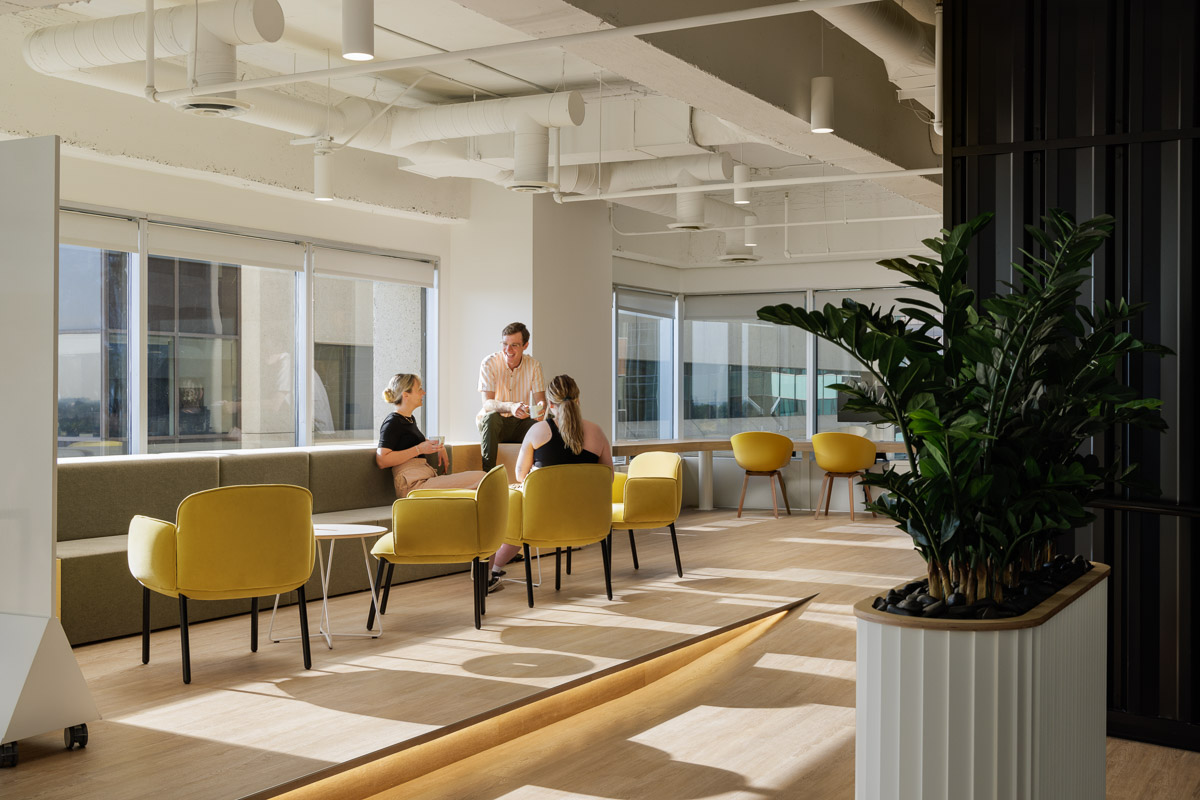Why workplace design?
Our passion for human-centred design has been the driving force behind our evolution as a company. We begin any project with placing people at the heart of our creative process. We step into their shoes, and lean into their challenges, aspirations, and behaviours to identify meaningful design solutions. Fundamentally, our transition to specializing in workplace design was driven by empathy. Because at the end of the day, our work is about more than just design.

Our passion for human-centred design has been the driving force behind our evolution as a company. We begin any project with placing people at the heart of our creative process. We step into their shoes, and lean into their challenges, aspirations, and behaviours to identify meaningful design solutions. Fundamentally, our transition to specializing in workplace design was driven by empathy. Because at the end of the day, our work is about more than just design. In this blog post, we explore the values underpinning our transition and the positive impact we aspire to make on people, organizations, and the industry as a whole.
Fundamentally, our transition to specializing in workplace design was driven by empathy. Because at the end of the day, our work is about more than just design.
Fostering well-being and community
In 2021, the World Health Organization identified burnout as an occupational phenomenon. Gallup’s 2023 State of the Global Workplace report found that only 35% of employees say that they are thriving in their overall wellbeing at work. 56% are surviving, with 9% miserable.
Workplace design is a powerful tool for wellbeing and community within and beyond the office walls. Collaborative, inclusive, and comfortable spaces can strengthen bonds between colleagues, contributing to a more supportive environment. This influence can also extend to the broader community. Satisfied and engaged employees often become active and positive contributors to their communities.
Adapting to flexible work arrangements
According to Gallup (2023), 50% of office workers expect a hybrid arrangement, and 25% expect to work exclusively remotely. Given this newfound preference for remote flexibility, leaders must make coming into the office worth it. Organizations need adaptable workplace design. Incorporating flexible seating, remote collaboration tools, and technology infrastructure allows organizations to cater to the diverse needs of their workforce, promoting a healthy work-life balance.
Enhancing productivity and satisfaction
Prospective employees are increasingly considering the work environment as a key factor in their decision-making process, and ultimately, our goal is to create spaces that people love. We seek to empower individuals by providing them with environments that inspire creativity, facilitate focus, and promote balance and choice. Incorporating wellness areas, flexible seating, and technology infrastructure allow organizations to cater to the diverse needs of their workforce.
Reflecting organizational culture
According to a collaborative study by Stanford University’s Center for Compassion and Altruism Research and Education (2021), predominant mindsets in corporate workplaces emphasize control, rigidity, scarcity, defensiveness, and hyperindividualism. Workplace design plays a pivotal role in reinforcing and shaping organizational culture. Many organizations that approach us are keen on flipping their traditional mindsets around work. Their goals include fostering care, embracing abundance, prioritizing well-being, emphasizing interconnectedness, and building a strong sense of community. Through workplace design, we contribute to the development of their identity, so that they can become a tangible expression of their culture and aspirations.
Many organizations that approach us are keen on flipping their traditional mindsets around work.
Accessibility and belonging
We believe that when you design for the needs of one or a few individuals, you enhance the experience for all. We want to create environments where each person, regardless of ability, can thrive and feels valued. Zallio and Clarkson (2021) suggests that holistically mapping the user journey during the design phase and collecting and evaluating user feedback after use are effective ways to create equitable and accessible spaces. From inclusive layouts and ergonomic furniture to integrating technology that fosters equal participation, a thoughtfully designed workplace is also good for all.
We’re committed to leading innovation and developing research-driven solutions within the interior design industry. Workplace design is dynamic and evolving, and by specializing in this field, we aspire to set new standards for excellence, staying ahead of emerging trends and adopting best practices. We’re so excited about the impact that our human-centred designs will have on the way people work, collaborate, and thrive. And we encourage others to learn more about how we can create a better world through the power of design.


